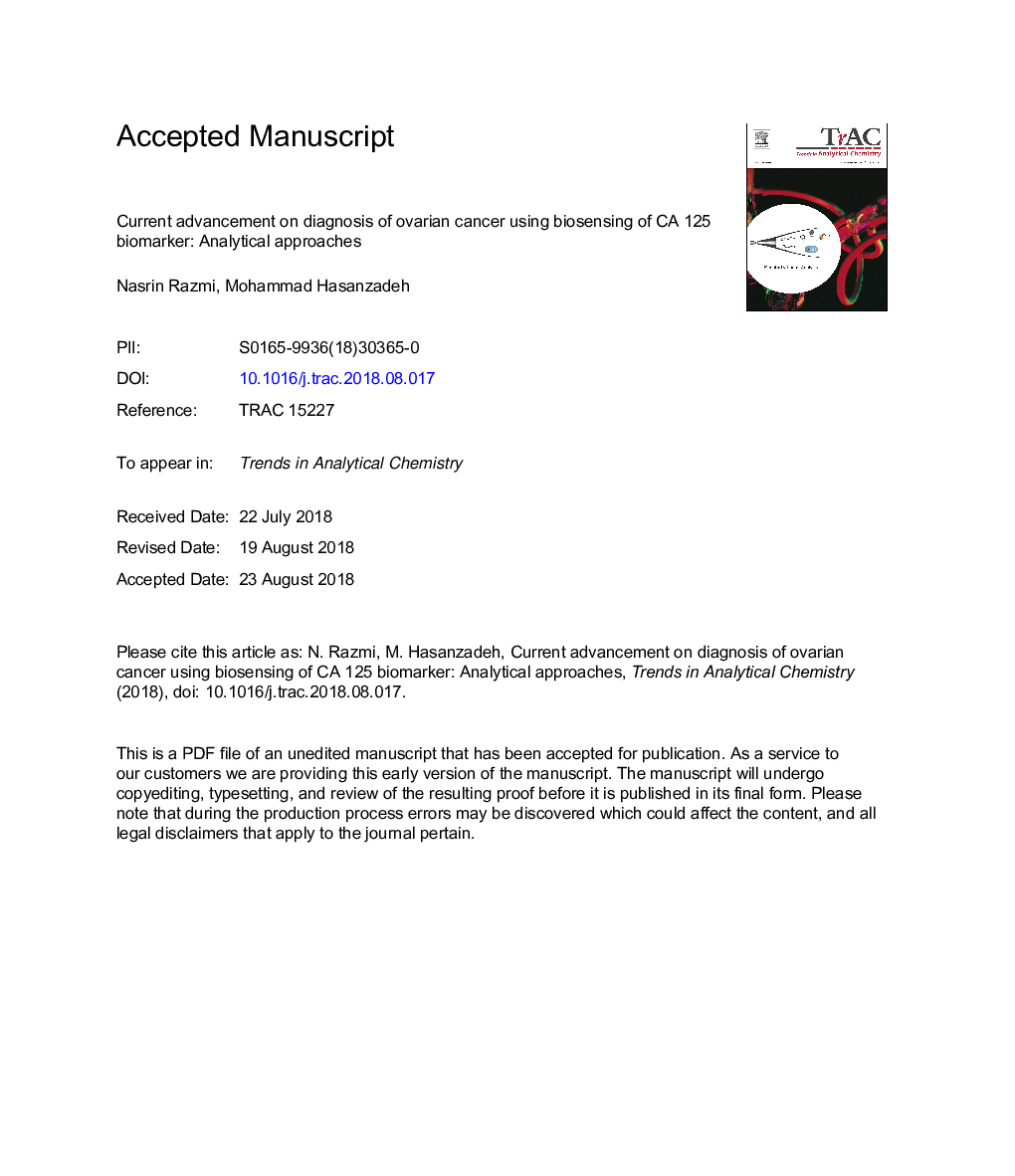| Article ID | Journal | Published Year | Pages | File Type |
|---|---|---|---|---|
| 10154558 | TrAC Trends in Analytical Chemistry | 2018 | 46 Pages |
Abstract
Ovarian cancer, as the most leading gynecological malignancy, has a highest morbidity rate worldwide and is associated with the concentrations of CA 125 antigen present, the suggested biomarker by National Cancer Institute (NCI), in blood. Clinically, the range of Mucin 16 (MUC16 or CA 125), a blood-circulating antigen, above threshold (normally less than 35 U/mL) has been linked with ovarian carcinoma and its progression. Studies revealed that 90% of women may test positive for CA 125 when they were diagnosed with the cancer. Therefore, detection of CA 125 levels holds clinical significance for diagnosis of ovarian cancer stages and monitoring the therapy responses in patients. Although available clinical conventional assays for CA 125 detection including, radiometric immunoassay, enzyme linked immuno-sorbent assay and fluorescence show high sensitivity and specificity, but they are expensive, time consuming, and require complicated operations with several separation steps, sophisticated instrumentation and experienced personnel. Thus, there is an utmost need of costless, portable, less time consuming and precise method for early CA 125 determination and screening to achieve an effective ovarian cancer diagnosis. Recently, biosensors has received utmost significance in healthcare field. Advances in biological techniques, instrumentation and nanotechnology have provided the scope for developing innovative and affordable biosensor platforms with improved features for early CA 125 quantification. This review, covers the studies and advancements in optical, piezoelectric and electrochemical biosensing platforms reported to CA 125 quantification with an introduction to CA 125 and its importance. Different improved methodologies and various transducers to CA 125 determination including intensity based optical CA 125 transducers, piezoelectric CA 125 transducers and electrochemical CA 125 transducers have been summarized and compared. The development trends of optical and electrochemical based biosensors are also introduced, including newly developed integrated biosensors, and the application of nanotechnology and biotechnology.
Related Topics
Physical Sciences and Engineering
Chemistry
Analytical Chemistry
Authors
Nasrin Razmi, Mohammad Hasanzadeh,
